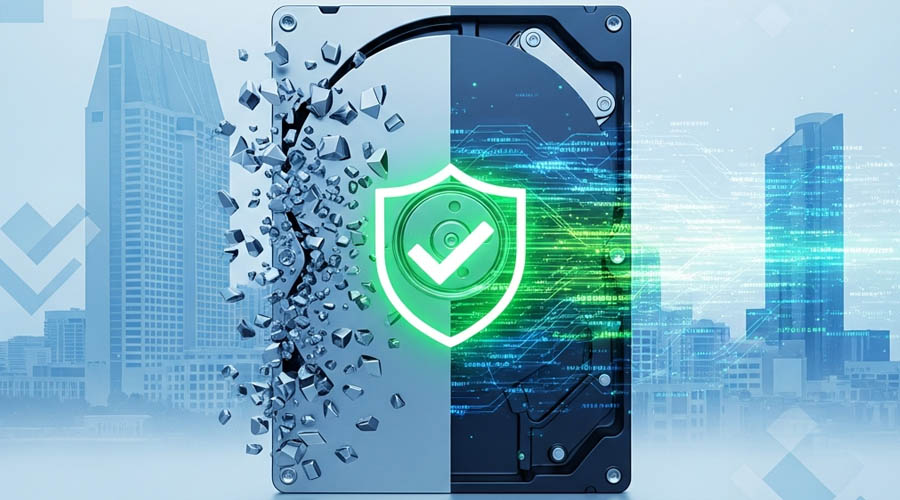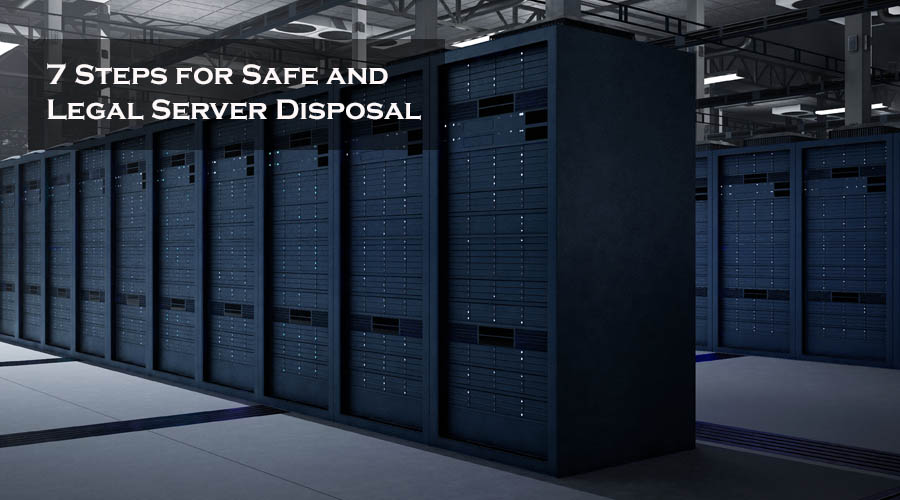🔒Introduction: Your Primary Responsibility is Data Security
When you decommission an old computer or server, the process doesn’t begin with unplugging the hardware; it begins with data destruction. In San Diego and throughout California, the CCPA (California Consumer Privacy Act) imposes direct liability on businesses for protecting consumer data, even on retired equipment. Any failure in secure data erasure for business—even accidental omission—is a direct path to a data breach and severe penalties. This guide outlines the 5 key steps to ensure full compliance when handling e-waste data security risks.
1. Identify and Assess Data-Bearing Devices
Before any action is taken, you must create a detailed IT asset inventory. This step requires you to identify and log every hard drive (HDD) and solid-state drive (SSD) designated for recycling.
- Action: Create a precise register, noting serial numbers and asset tags.
- Expert Insight: The destruction methods for HDDs and SSDs are fundamentally different. SSDs require specialized software due to their architecture, making this assessment crucial for successful destruction.
2. Choose the Proper Destruction Method (Wiping vs. Physical)
Legally compliant data destruction relies on two industry-recognized methods, both of which meet the NIST 800-88 standard—the benchmark for government and corporate data wiping verification.
- A. Certified Software Wiping: Data is overwritten multiple times. This method is suitable for equipment that may be resold or repurposed. It must be performed using certified software capable of documenting the process for legal purposes.
- B. Physical Destruction: This involves hard drive shredding services or degaussing (using a powerful magnetic field). This option is mandatory for severely damaged or inoperable drives, or whenever maximum security is required.
3. Verification and the Certificate of Data Destruction (CDD)
The destruction method is secondary to the legal proof. The most critical step is data wiping verification—proving the data is permanently gone.
- Legal Requirement: Only a certified data destruction San Diego vendor can provide a Certificate of Data Destruction (CDD). This document is your sole legal defense against a data breach claim under CCPA. It must list the serial numbers of the destroyed media.
Don’t leave your company exposed to severe CCPA fines. If you require proof of data sanitization, partner with a trusted expert. We guarantee CCPA compliant data wiping and provide the necessary CDD for every single device. Secure your liability today with our certified data destruction San Diego services. This includes comprehensive solutions for Desktop Computers Recycling and Notebook Recycling in San Diego.
4. Secure Logistics to the Destruction Center
If the destruction is not performed on-site (at your San Diego location), the physical transport of the data-bearing devices must be secured and documented.
- Action: Drives must be transported in locked containers and covered by an official Asset Transfer Report. This ensures the transfer of liability to the certified vendor the moment the assets leave your control, protecting your chain of custody.
5. Final Compliance and Audit Documentation
The final step is documentation. Your IT and legal teams must retain proof that the data was destroyed according to best practices.
- Action: Store the CDD and the Asset Transfer Report for a period of 5–7 years to satisfy audit requirements. This closes the loop on CCPA compliant data wiping and ensures that your internal records are flawless.
Conclusion
Do not rely on simple formatting or factory resets. Only certified methods of wiping or physical destruction, evidenced by a CDD, will protect your business from the significant penalties associated with e-waste data security risks in California.
Frequently Asked Questions (FAQ)
❓ What is the NIST 800-88 standard?
NIST 800-88 is the National Institute of Standards and Technology guideline outlining media sanitization best practices. Compliance means your data destruction methods meet federal and industry requirements, giving your CDD maximum legal weight.
❓ Why can’t I use the same wiping method for HDDs and SSDs?
HDDs rely on magnetism and are wiped through overwriting sectors. SSDs use flash memory and wear-leveling, which means data can be stored in sectors you cannot access, making complete wiping much more difficult and requiring specialized, verified software.
❓ Is it possible to perform hard drive shredding services on-site in San Diego?
Yes, many certified data destruction vendors offer mobile shredding services. This allows your IT staff to visually confirm the physical destruction of the hard drives before they leave your property, offering the highest level of security and peace of mind




